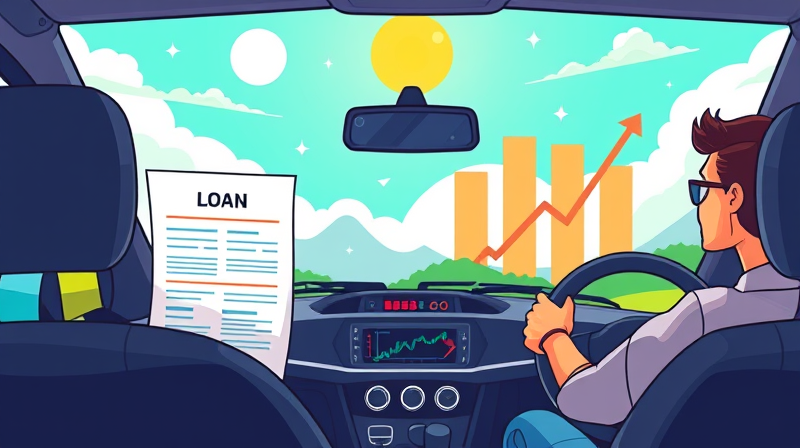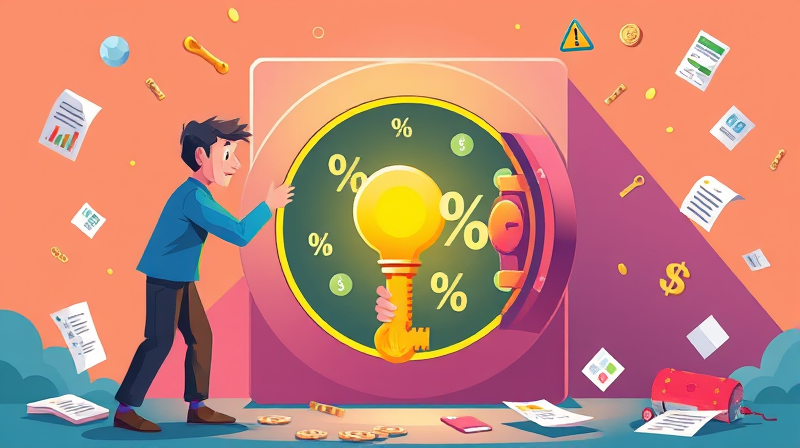Buying a car can be thrilling—but the financing journey often feels like uncharted territory filled with surprises.
Current Auto Loan Market Overview
In 2025, Americans owe a staggering $1.655 trillion in auto loan debt, making it the second-largest consumer debt category behind mortgages. In Q4 2024 alone, consumers took out $175.1 billion in new loans, driven by younger borrowers under age 50.
Average loan amounts and payments illustrate the scope of commitments:
- New vehicles: $41,572 average loan, $742 monthly payment
- Used vehicles: $26,468 average loan, $525 monthly payment
- Leased vehicles: $600 average monthly charge
Interest rates vary widely by credit tier, with an average interest rate of 6.35% for new cars and 11.62% for used cars. Meanwhile, loan originations dipped 1.2% year-over-year as of September 2024, even as inquiries rose by 1.3%, suggesting persistent buyer interest despite stricter lending.
Concerning Consumer Trends
As of January 2025, 6.6% of subprime borrowers were at least 60 days delinquent—the highest rate on record. This underscores the pressure many buyers face when balancing car payments with daily living costs.
At the same time, used car and truck prices climbed 0.8% year over year, while new vehicle prices dipped by 0.3%. These shifts can alter affordability and push consumers toward larger loans or longer terms just to stay within budget.
Unveiling Hidden Costs and Fees
Dealerships may spotlight the monthly payment but omit additional charges until the final paperwork. Common hidden expenses include:
- Extended warranties and service contracts
- Dealer preparation and documentation fees
- Advertising surcharges and delivery costs
- Title, registration, and administrative charges
These fees can add hundreds or even thousands to your total cost. Always request a line-by-line breakdown of every fee before agreeing to finance.
The Importance of Down Payments
Increasing your down payment reduces both the principal and the overall interest you pay. For a $40,000 vehicle over 48 months at 6.61% APR, different down payment levels yield striking differences:
Boosting your down payment from 10% to 20% not only lowers your payment by nearly $100, but also reduces your lifetime interest costs by over $500.
Loan Term Considerations: Shorter vs. Longer Terms
Loan durations have been stretching toward six years, driven by the appeal of lower monthly payments. However, extending a loan to 72 months can dramatically increase the total interest paid.
Consider the full loan term to understand the true cost of financing. A shorter 48- or 60-month term may raise your monthly payment slightly but save you significant interest.
Keep in mind that refinancing opportunities may arise if market rates decline, allowing you to shorten your term or lower your rate. Balancing short-term cash flow with long-term expense is key to a healthy financial decision.
Credit Scores: Your Silent Negotiator
Your credit score determines the APR you’re offered. The average score for new car loans sits at 755, while used car loans average 691. Improving your score before shopping can grant you premium financing opportunities and lower overall costs.
Begin by reviewing your credit report for inaccuracies and paying down revolving debt to reduce utilization. Consistent on-time payments and limited new inquiries also help.
Even a modest score increase can drop your APR by several points, saving you thousands over the life of the loan. Timing your purchase after bolstering your credit can significantly improve your deal.
Documentation and Timing: What Dealers Tend to Skip
Dealers often withhold the full list of required documents until late in the process, causing delays and frustration. Arrive prepared with:
- Proof of income (pay stubs, W-2s, tax returns)
- Proof of residence (utility bills, lease agreements)
- Proof of insurance coverage
- Current vehicle title and registration for trade-ins
Showing up with all required paperwork demonstrates readiness and can speed negotiations, preventing last-minute surprises.
Empowering Your Decision: Practical Tips
Knowledge is your greatest leverage. Obtain pre-approval from banks or credit unions to set a firm budget. Separate price negotiation from financing discussions to maintain control.
Carefully review the finance agreement, asking for clarification on any term that seems vague. Factor in the total cost of ownership—including maintenance, taxes, and insurance—to make a truly informed choice.
Conclusion: Driving Forward with Confidence
Auto financing doesn’t have to feel like navigating a maze. With comprehensive market awareness, an understanding of hidden fees, and careful preparation, you can secure an auto loan that aligns with your financial goals.
Remember: you are the most important negotiator in the room. Demand transparency, take your time, and drive away knowing you’ve made a choice that serves your future best.
References
- https://www.lendingtree.com/auto/debt-statistics/
- https://www.axios.com/2025/03/07/car-loan-payment-delinquencies-record-high
- https://www.experian.com/blogs/ask-experian/auto-loan-rates-financing/
- https://libertystreeteconomics.newyorkfed.org/2025/02/breaking-down-auto-loan-performance/
- https://www.consumerfinance.gov/data-research/consumer-credit-trends/auto-loans/
- https://www.nerdwallet.com/best/loans/auto-loans/auto-loans-for-good-fair-and-bad-credit
- https://www.bankrate.com/loans/auto-loans/auto-loan-documentation-checklist/
- https://www.statista.com/statistics/290673/auto-loan-rates-usa/










